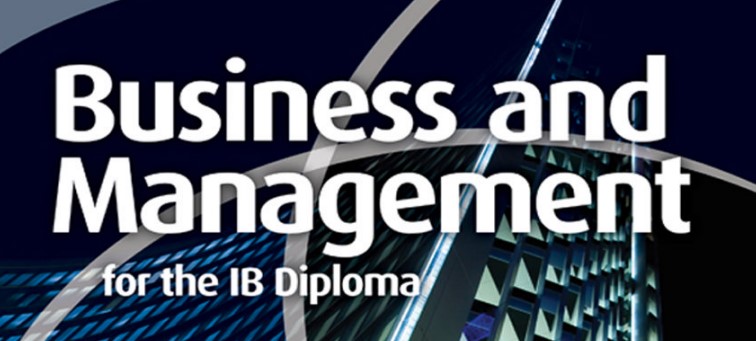 .
.
fuente (business management - study and revision guide - paul hoang - hodder 2016)
Nature of the subject (Introduction)
The IB Diploma Programme Business and Management is designed to develop an understanding of essential business theory and the ability to apply business principles, practices and skills. It encourages students to analyse the diverse range of business organisations and activities and the cultural and economic context in which businesses operate.
objetiveof the subject
The emphasis is placed on strategic decision-making and the business functions of marketing, production, human resource management and fi nance. Business and management is the study of both the way in which individuals and groups interact in an organisation and of the transformation of resources. It is, there fore, perfectly placed within the group 3 subject area (individuals and societies) of the IB Diploma Programme hexagon.
 .
.Syllabus component | Recommended teaching hours | |
SL | HL | |
Unit 1: Introduction to business management 1.1 What is a business? 1.2 Types of business entities 1.3 Business objectives 1.4 Stakeholders 1.5 Growth and evolution 1.6 Multinational companies (MNCs) | 2 0 | 20 |
Unit 2: Human resource management 2.1 Introduction to human resource management 2.2 Organizational structure 2.3 Leadership and management 2.4 Motivation and demotivation 2.5 Organizational (corporate) culture (HL only) 2.6 Communication 2.7 Industrial/employee relations (HL only) | 20 | 35 |
Unit 3: Finance and accounts 3.1 Introduction to finance 3.2 Sources of finance 3.3 Costs and revenues 3.4 Final accounts 3.5 Profitability and liquidity ratio analysis 3.6 Efficiency ratio analysis (HL only) 3.7 Cash flow 3.8 Investment appraisal 3.9 Budgets (HL only) | 30 | 45 |
Unit 4: Marketing 4.1 Introduction to marketing 4.2 Marketing planning 4.3 Sales forecasting (HL only) 4.4 Market research 4.5 The seven Ps of the marketing mix 4.6 International marketing (HL only) | 30 | 35 |
Unit 5: Operations management 5.1 Introduction to operations management 5.2 Operations methods 5.3 Lean production and quality management (HL only) 5.4 Location 5.5 Break-even analysis 5.6 Production planning (HL only) 5.7 Crisis management and contingency planning (HL only) 5.8 Research and development (HL only) 5.9 Management information systems (HL only) | 15 | 45 |
Business management toolkit | 10 | 35 |
Research time allocated for the pre-released statement in paper 1 | 5 | 5 |
Internal assessment | 20 | 20 |
Total teaching hours | 150 | 240 |
Assessment objectives
By the end of the business management course, students are expected to achieve the following assessment objectives.
AO1: Knowledge and understanding
Demonstrate knowledge and understanding of:
business management tools and theories
course topics and concepts
business problems, issues and decisions
HL extension topics (HL only).
AO2: Application and analysis
Apply and analyse:
business management tools and theories
course topics and concepts
business problems, issues and decisions
business decisions and issues through the selection and use of appropriate data
HL extension topics (HL only).
AO3: Synthesis and evaluation
Synthesize and evaluate:
business management tools and theories
course topics and concepts
business problems, issues and decisions
stakeholder interests to reach informed business decisions
recommendations for competing future strategic options (HL only)
HL extension topics (HL only).
AO4: Use and application of appropriate skills
Select and apply relevant business management tools, theories and concepts to support research into a business issue or problem.
Select, interpret and analyse business materials from a range of primary and secondary sources.
Create well-structured materials using business management terminology.
Communicate analysis, evaluation and conclusions of research effectively.
Assessment outline—SL
| First assessment 2024 |
Assessment component | Weighting |
External assessment (3 hours) Paper 1: (1 hour and 30 minutes) Based on a pre-released statement that specifies the context and background for the unseen case study Assessment objectives: AO1, AO2, AO3, AO4 (30 marks) Section A Syllabus content: Units 1–5 excluding HL extension topics Students answer all structured questions in this section based on the case study (20 marks) Section B Syllabus content: Units 1–5 excluding HL extension topics Students answer one out of two extended response questions based on the case study (10 marks) | 70% 35% |
Paper 2: (1 hour and 30 minutes) Based on unseen stimulus material with a quantitative focus Assessment objectives: AO1, AO2, AO3, AO4 (40 marks) Section A Syllabus content: Units 1–5 excluding HL extension topics Students answer all structured questions in this section based on the unseen stimulus material (20 marks) Section B Syllabus content: Units 1–5 excluding HL extension topics Students answer one out of two questions comprised of some structured questions and an extended response question based on the unseen stimulus material (20 marks) | 35% |
Internal assessment (20 hours) This component is internally assessed by the teacher and externally moderated by the IB at the end of the course. Business research project Students produce a research project about a real business issue or problem facing a particular organization using a conceptual lens. Maximum 1,800 words. (25 marks) |

- Teacher: Fernando Velasquez Acevedo
- Teacher: Paula Marcela Velez Rincon